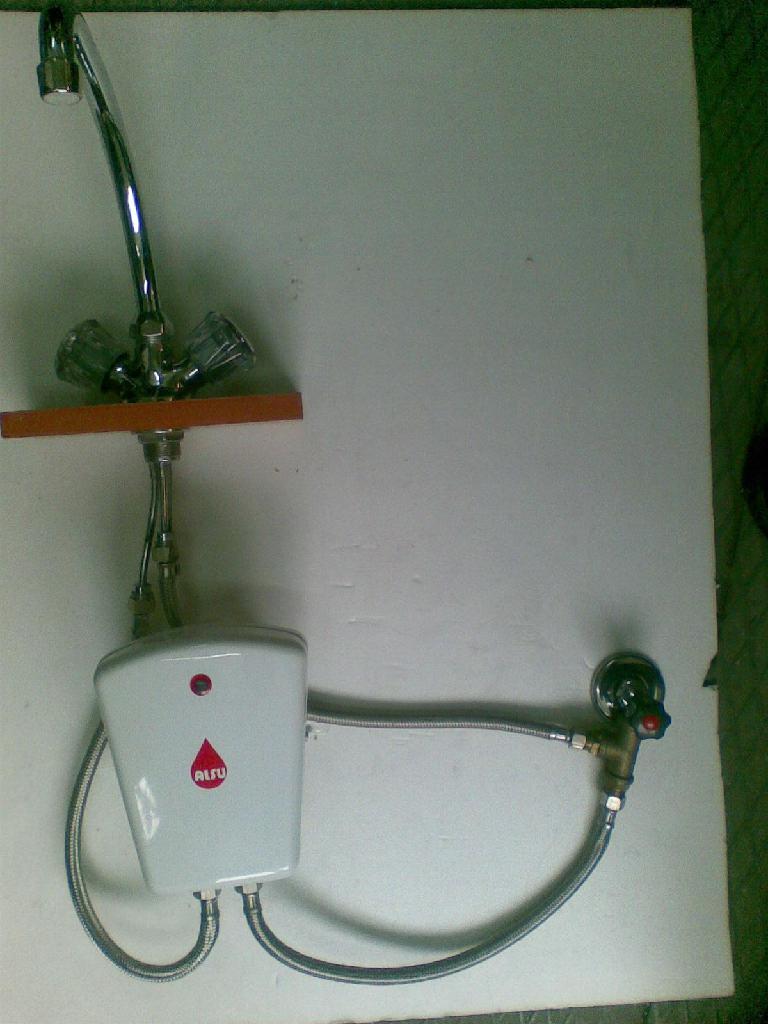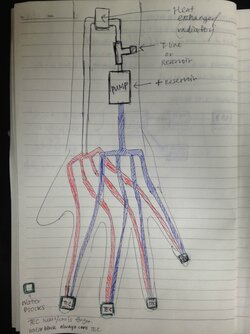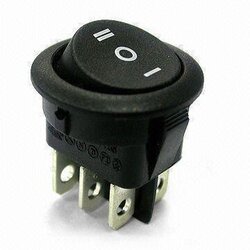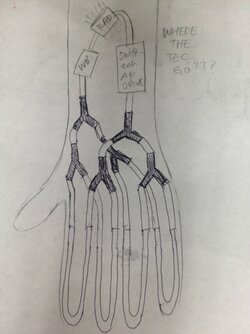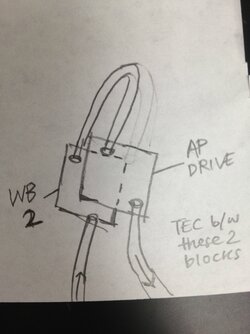yes, one block goes hot, while the other goes cool, but the whole setup would be like a perpetuum mobile and run out of control before you know... the TECs cold side getting to warm, resulting in the TECs hot side growing to hot and frying the TEC or the hot side get "too cold" resulting in the cold side getting so cold it freezes the water. Although in reality the whole ting running too hot is more likekly.
The thing with the blocks is that whatever side is the hot side, the block will lack the capcity to move the heat away fast enough, while the cold side is probably even slower in cooling the water. Thus the whole loop will have the tendency to run hot.
Given a body of water the energy requirement to raise or lower the temp of the body with 1°C is about the same, only the timeframe differs.

This is where the radiator comes in: to act as a balancer , an equaliser, to dampen the difference between hot & cold. You dont *need* a radiator.. you could achieve the same with a 5 gallon reservoir... but that is slightly bigger as a radiator

The radiator will probably not be enough to keep everything in check, but it will slow down heating or cooling long enough so it is less brutal.
One one end of the Block/TECBlock sandwich you have "the hand"-loop , on the other end the Radiator loop.
For the electrical part:
The most imporant thing is to put in an OFF switch , preferably a thermal OFF, something which powers OFF the TEC when the watertemp goes over say 40°C
An inline probe/sensor is easy... making a circuit/relais to switch off the TEC when a certain temp/resistance is reached might be a bit more difficult.
When you switch polarity, the previous HOT side/block will cool down (fast) while the other block goes from cold to hot. Since the water just goes around relentlessly in a circle through the hand & blocks it will start heating up or cooling down depending on the polarity you are feeding. There will be a short moment of equilibrium

Getting the TEC & rad right might involve some advanced math & experiments

My guts say that you can probably get away with a relative low power TEC maybe 40W or less. But this is where the real TEC specialist come in

You might need more, you might need less.
Of course if you have access to switching power supply like one of the better Meanwells where you can regulate volts & amps seperatly, then you can get there by experimenting

Also, the Radiator might be able to work with the fans turned down when cycling "hot" fingers and the fans ramped up with running the cold hand
.
With the right kind of rad -like one with a build in reservoir, you wont need a seperate reservoir.. But a T line is always helpfull in bleeding & filling
.
